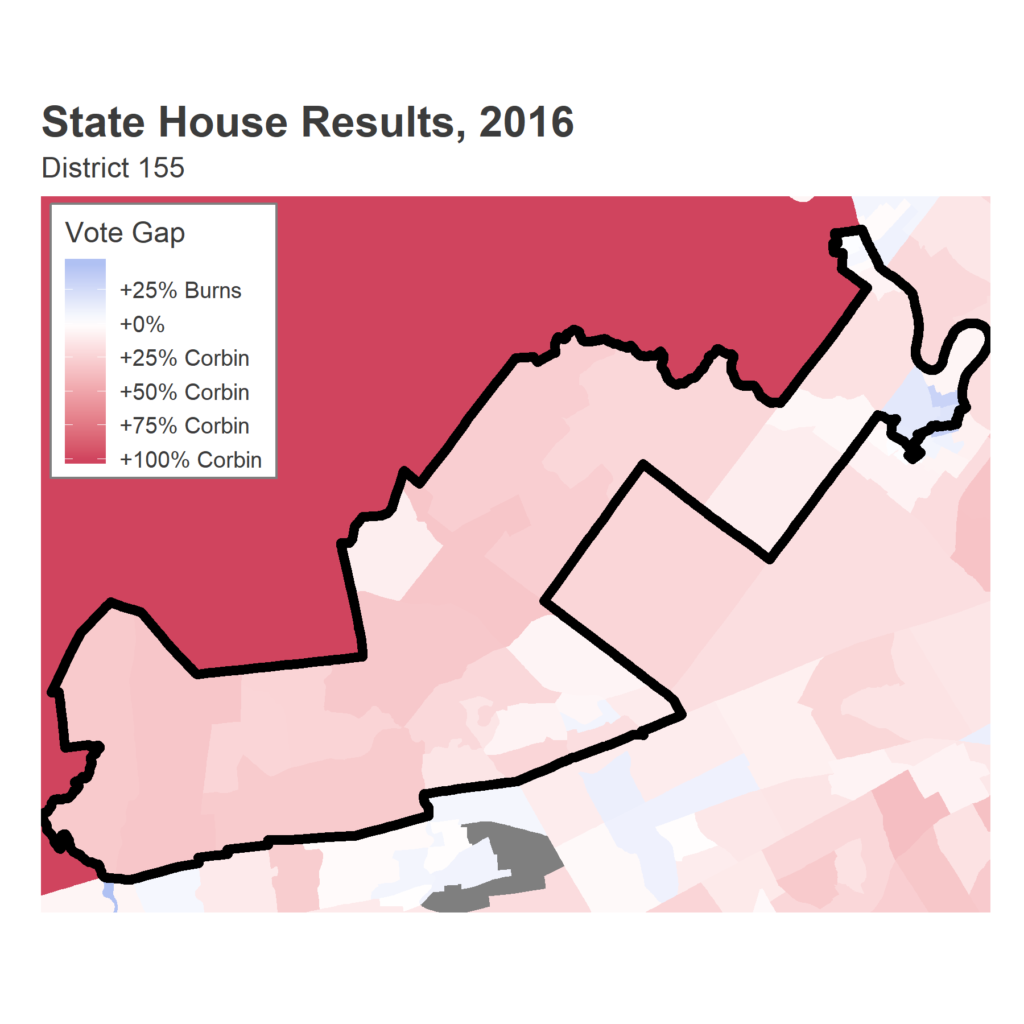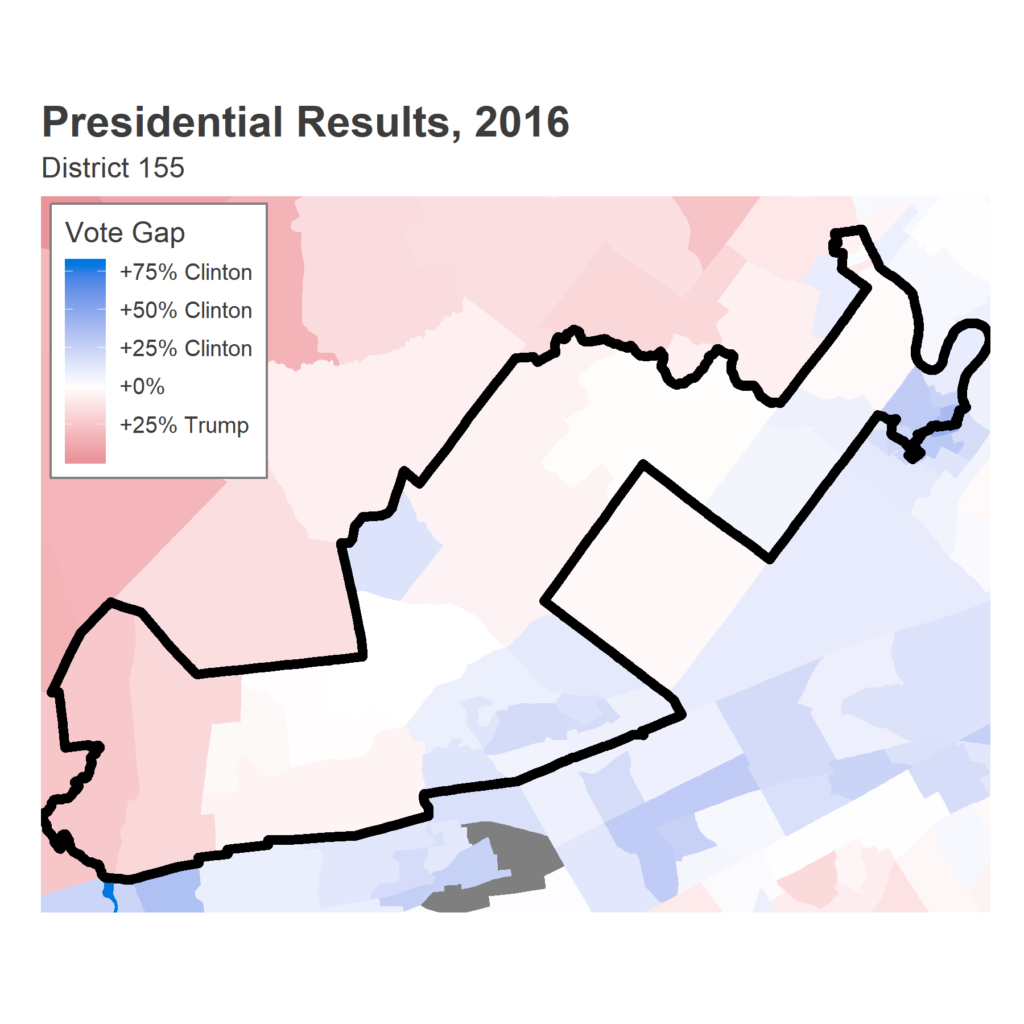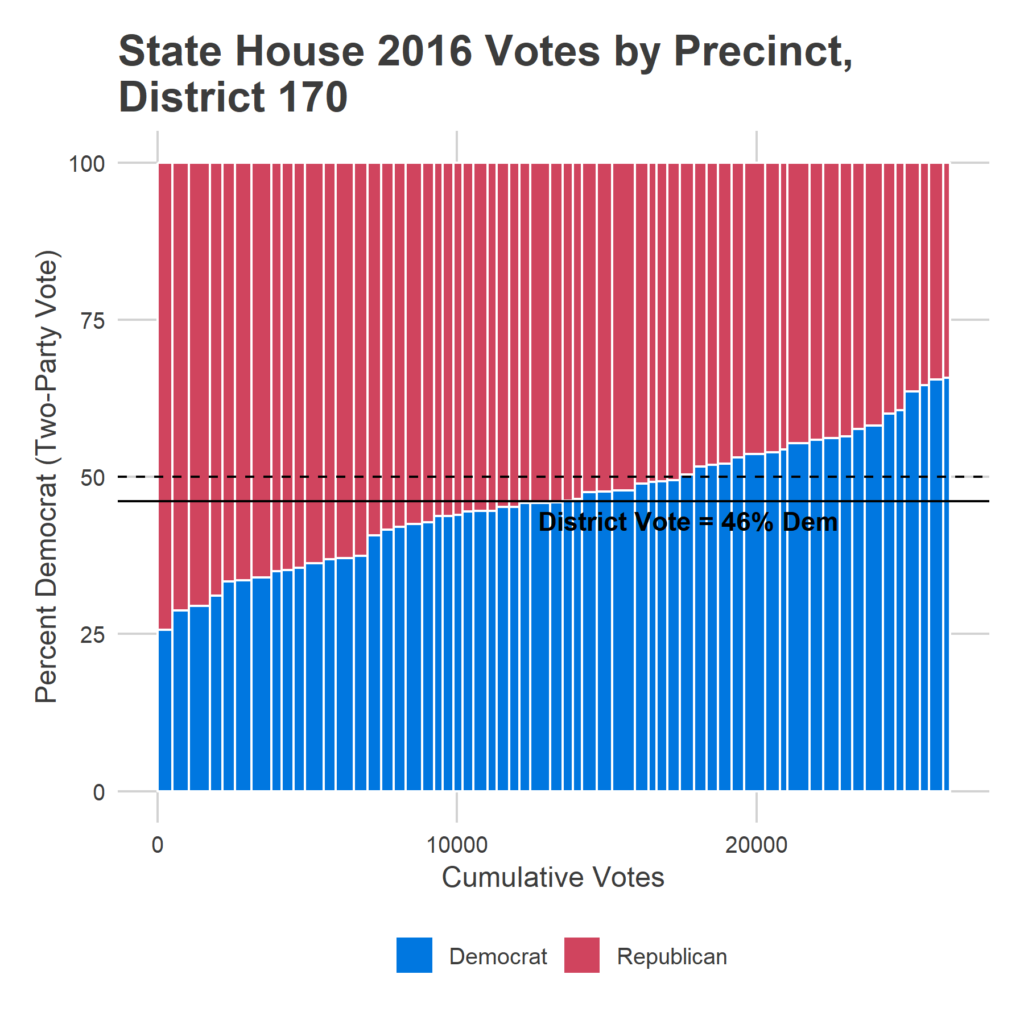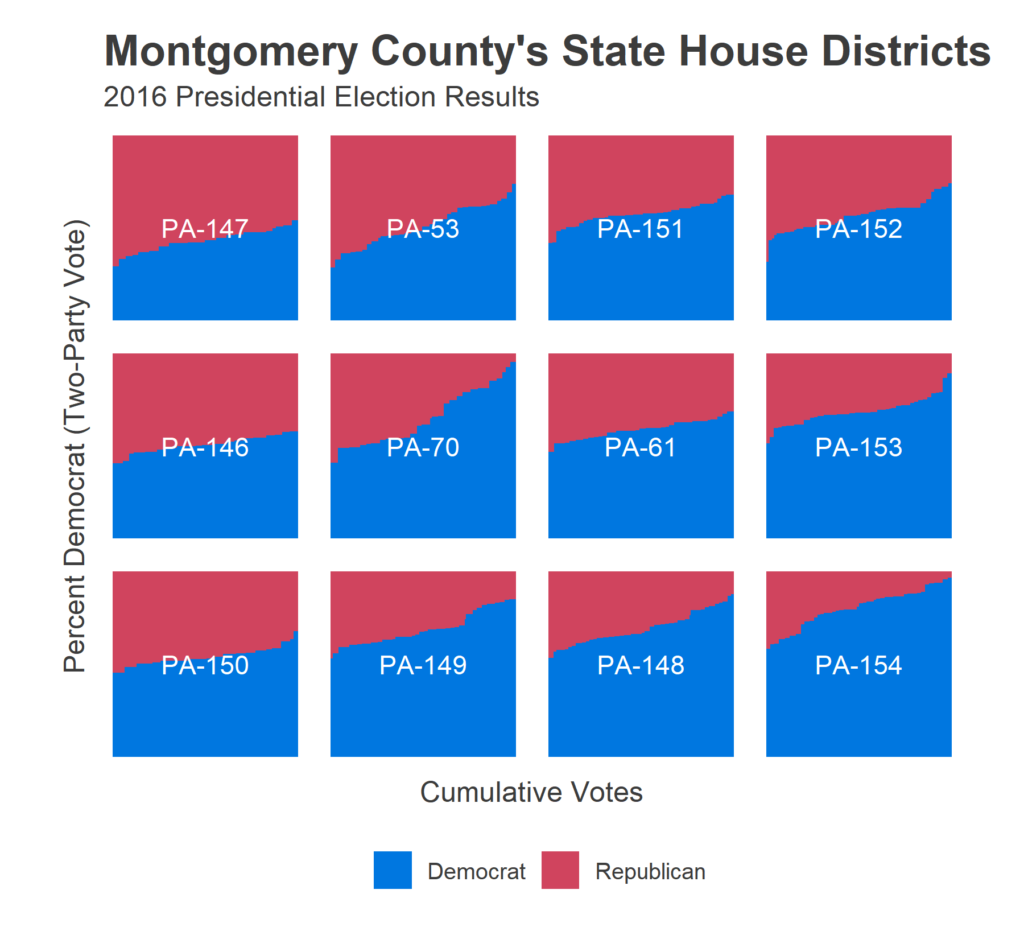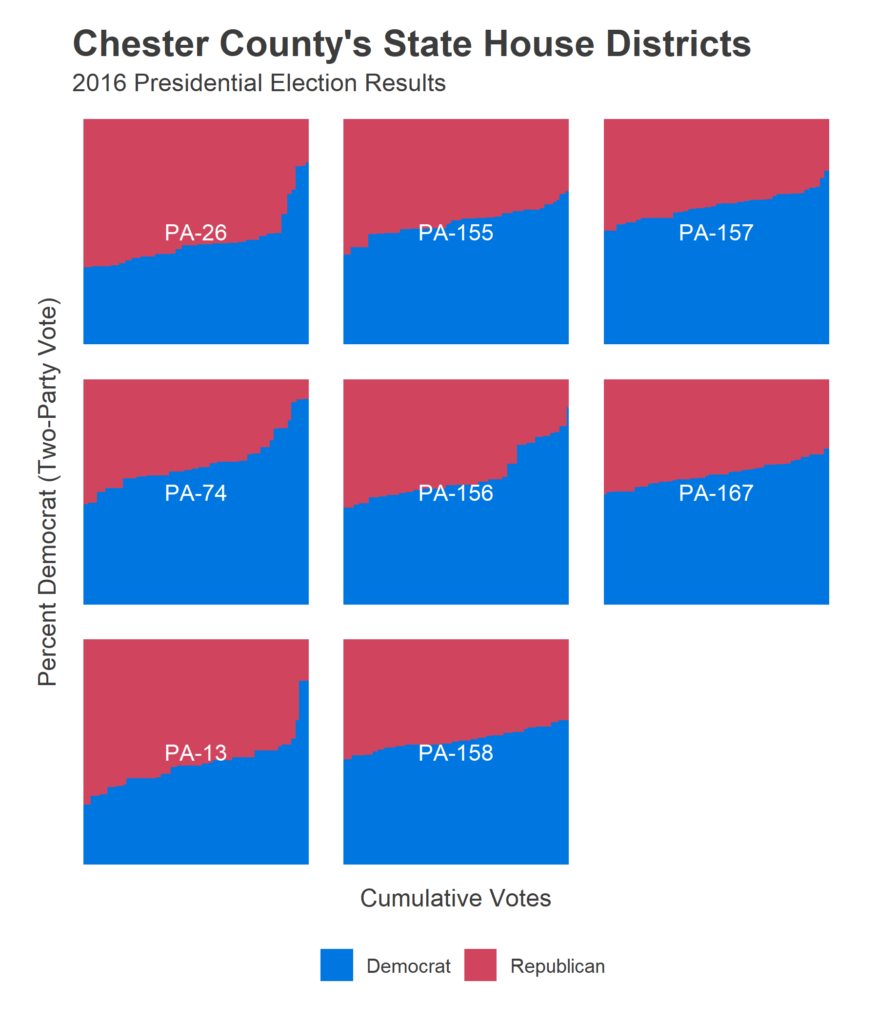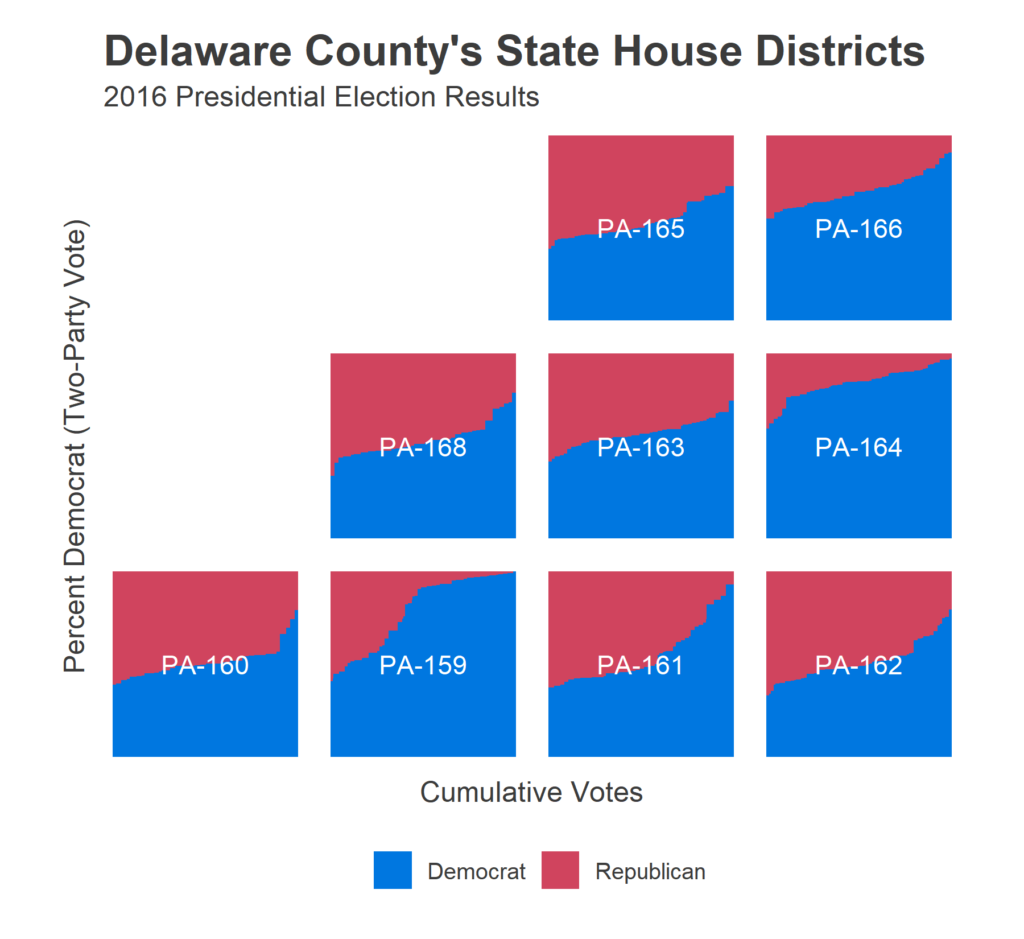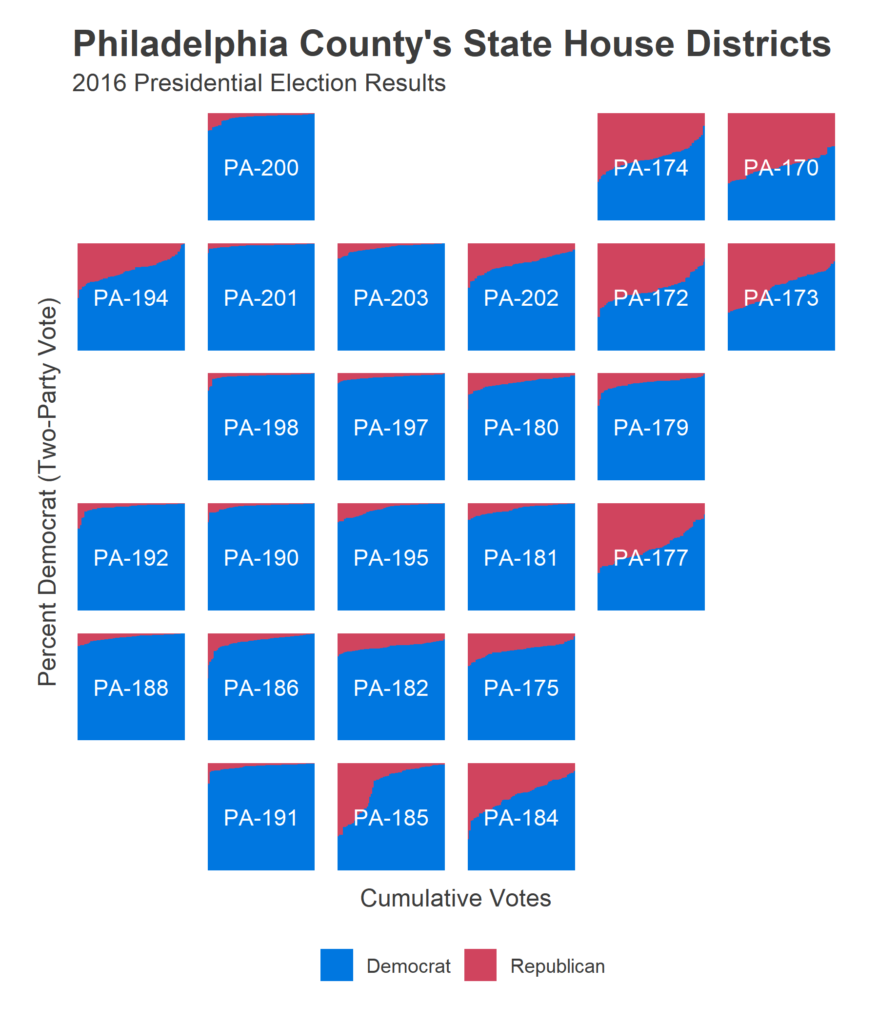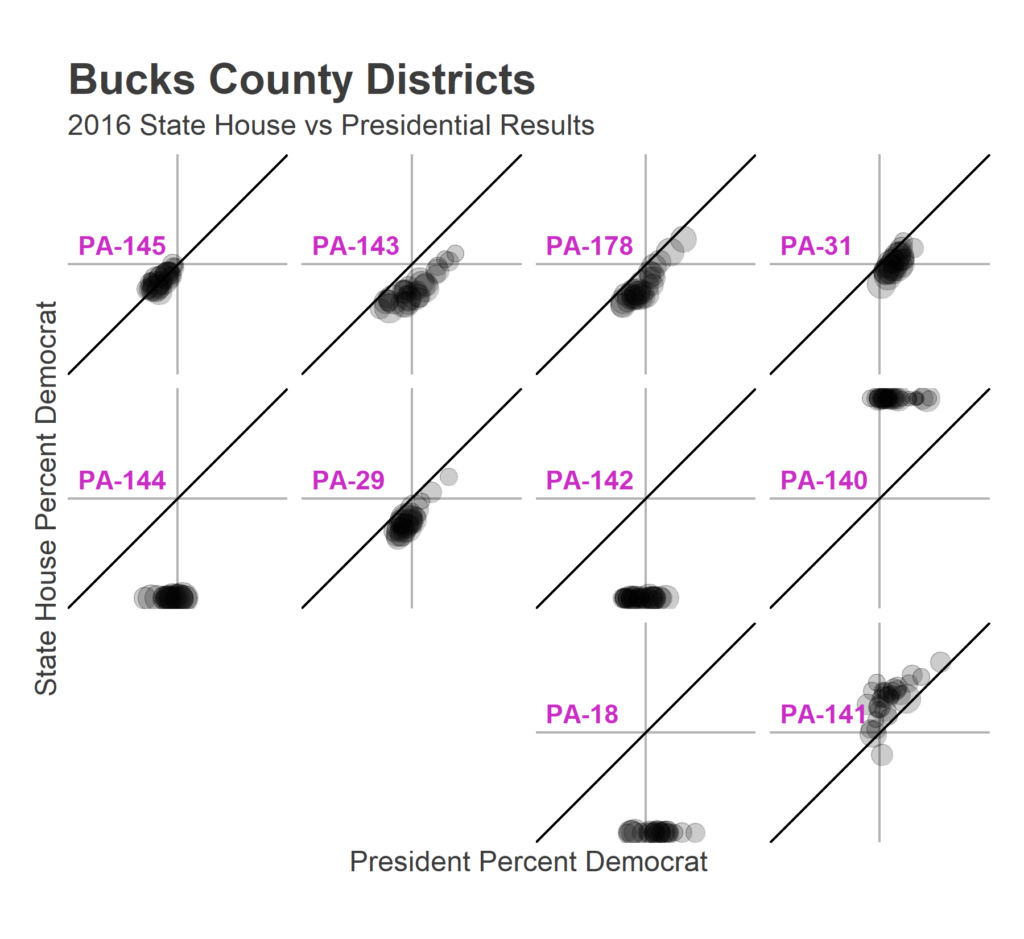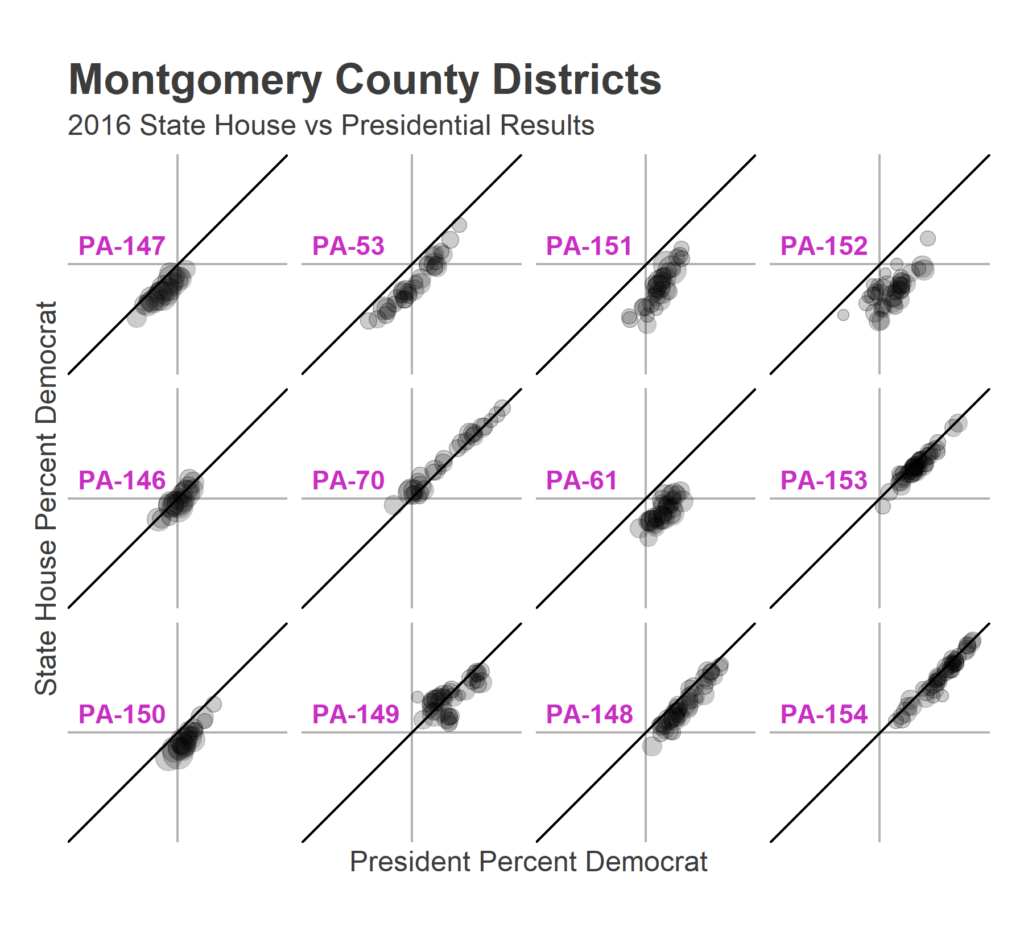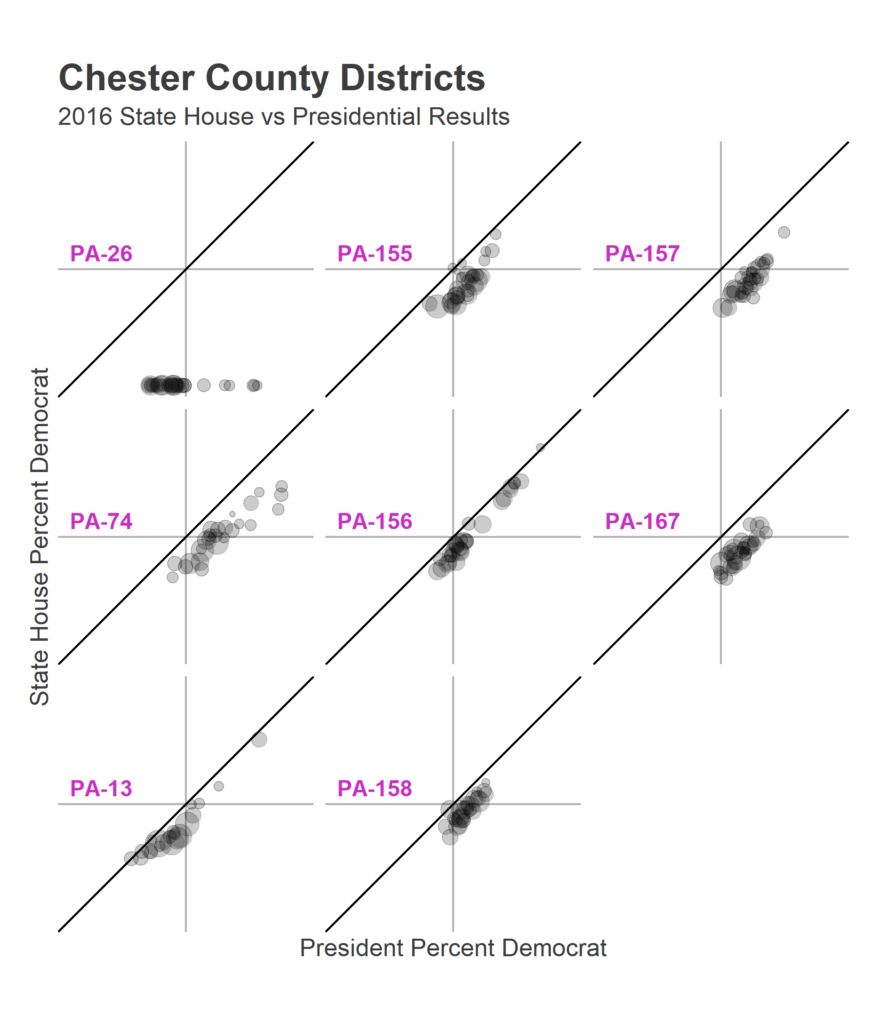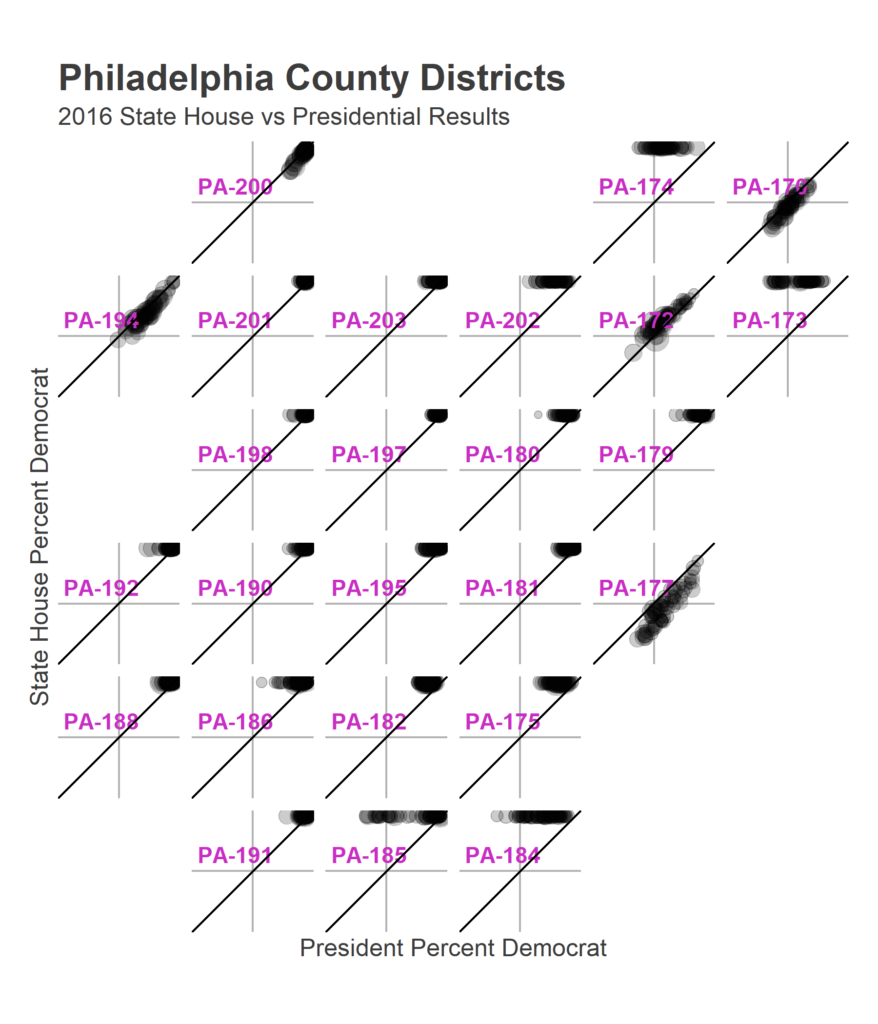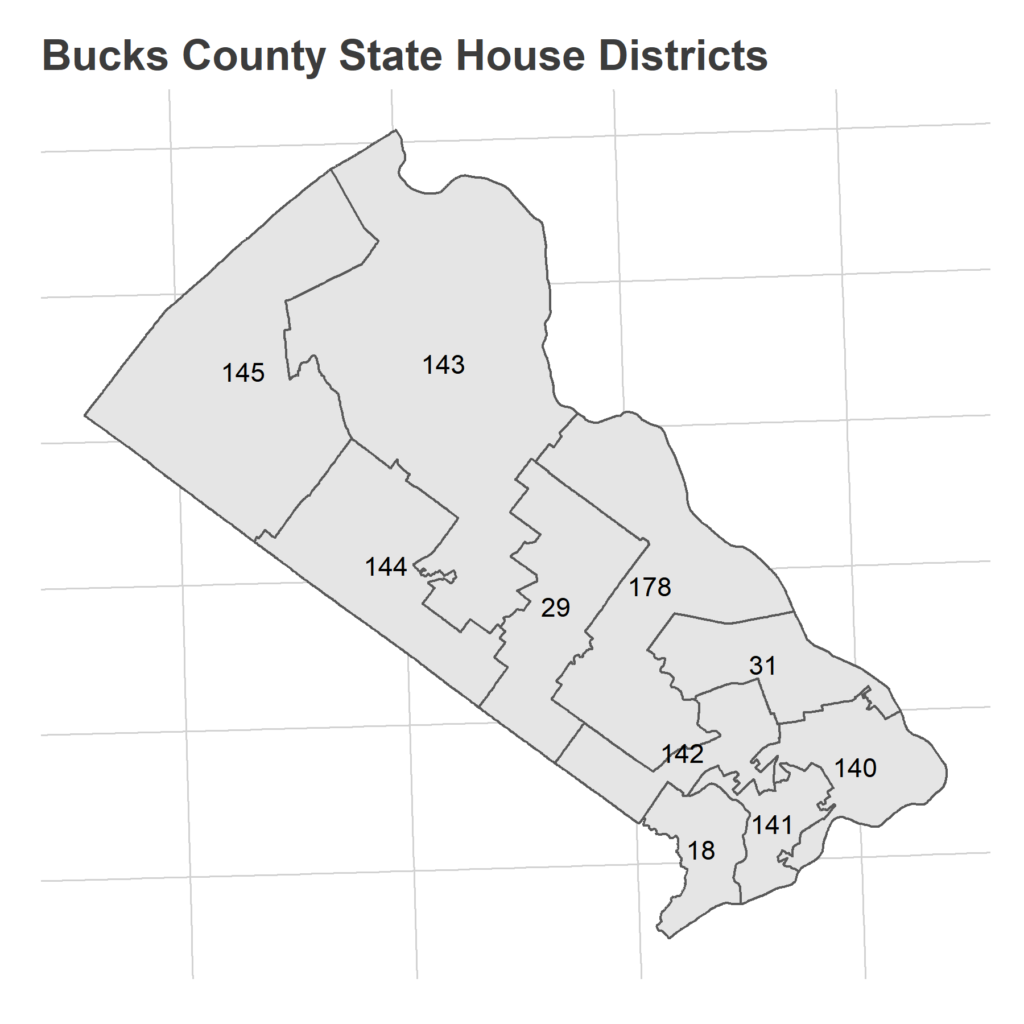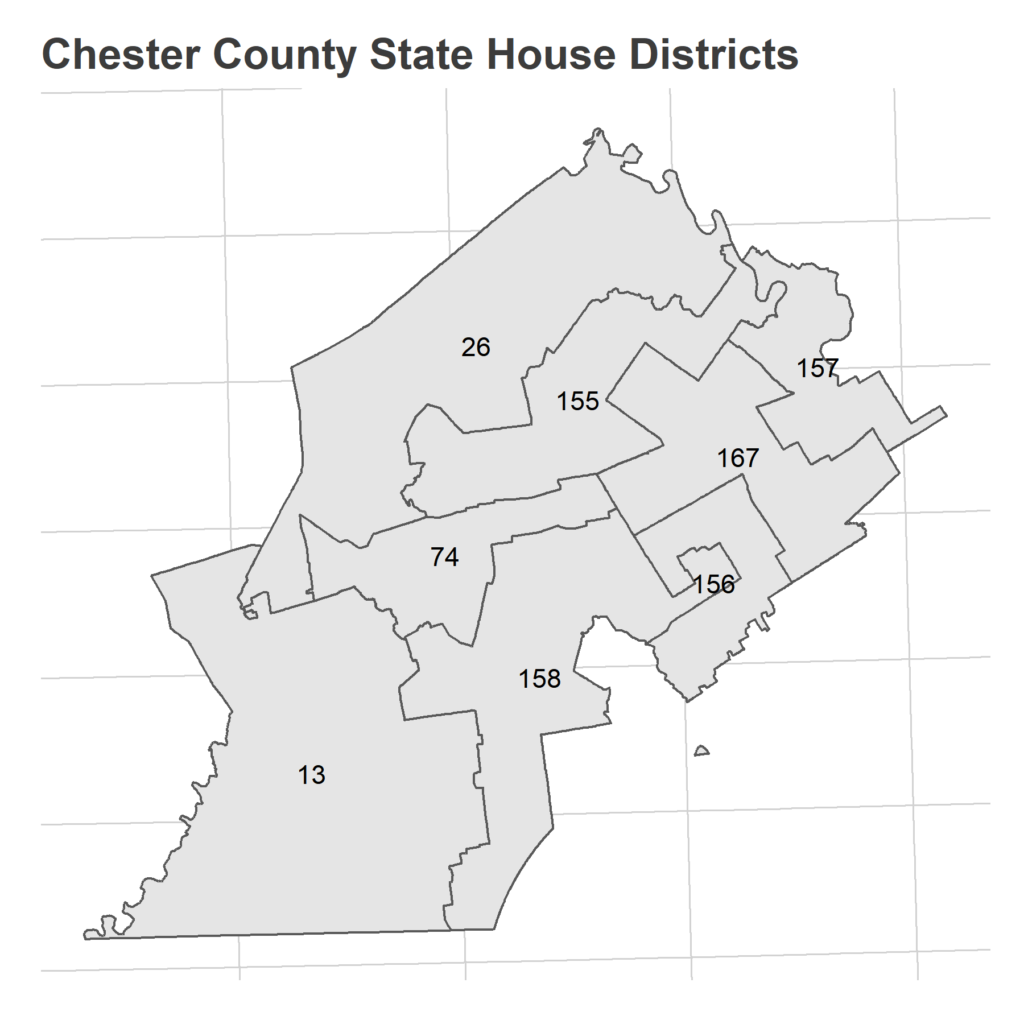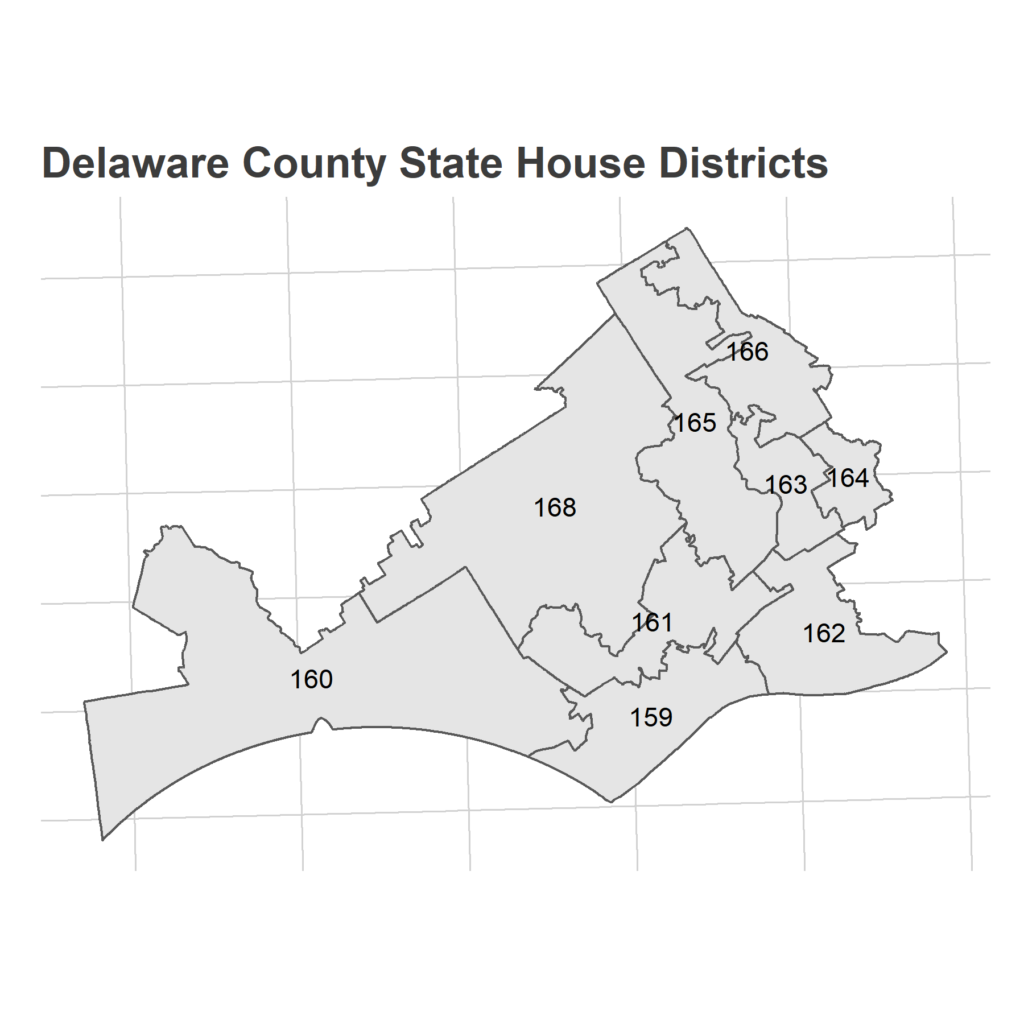Democrats need to pick up 20 seats to tie up the PA House. There are 19 districts currently held by Republicans that voted for Clinton in 2016. All of them are in the Philadelphia region. I’ve profiled Delco’s District 168, Philadelphia’s Districts 170 and 177, and Bucks’ District 178.
Today, let’s look at Chester County, which showed some of the region’s strongest anti-Trump shifts. If Democrats want to have any chance to win the House, they need to win these districts with strong, Republican incumbents but which voted for Clinton in 2016. District 155 exemplifies these important districts: Republican incumbent Becky Corbin won by 16 points in 2014 even as Clinton won the district by 8. She’s being challenged by Danielle Friel Otten, running from the left with endorsements by Emily’s List, Planned Parenthood, and the SEIU.
District 155
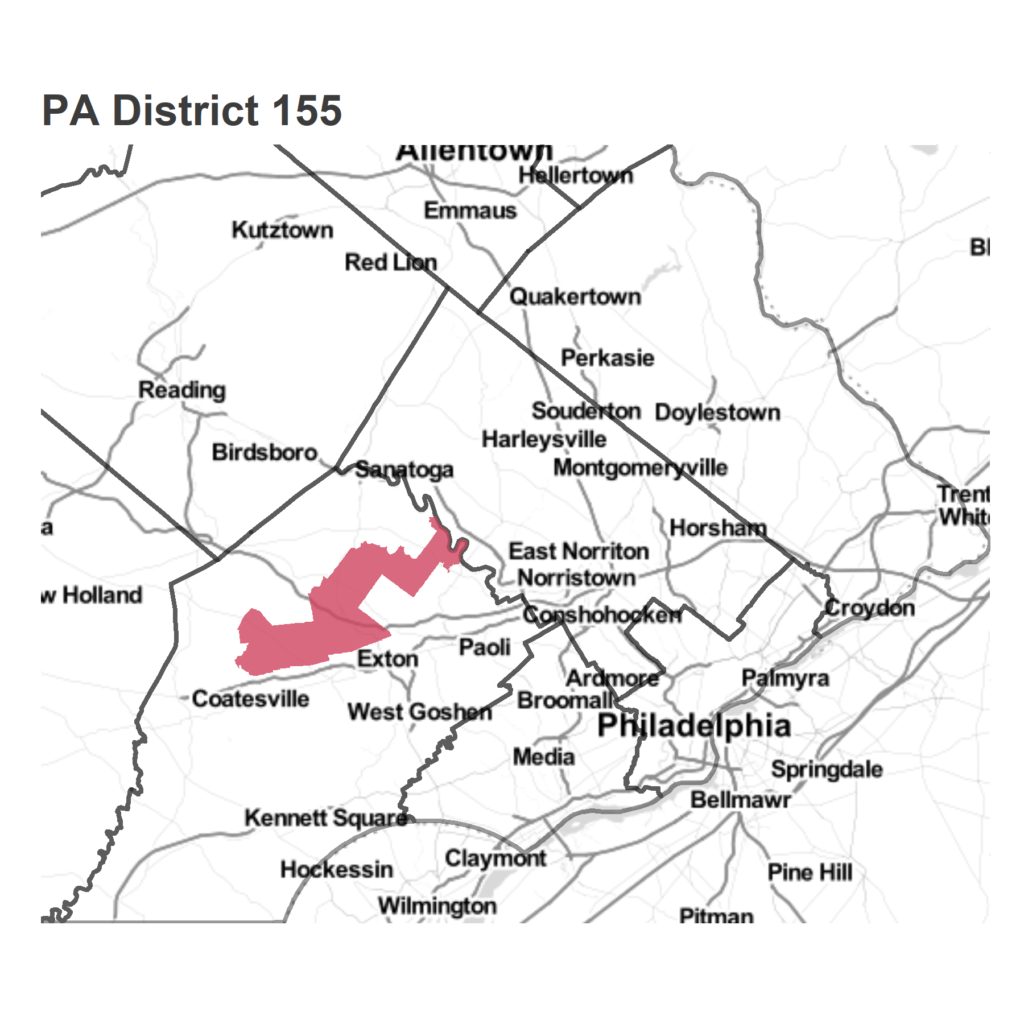 |
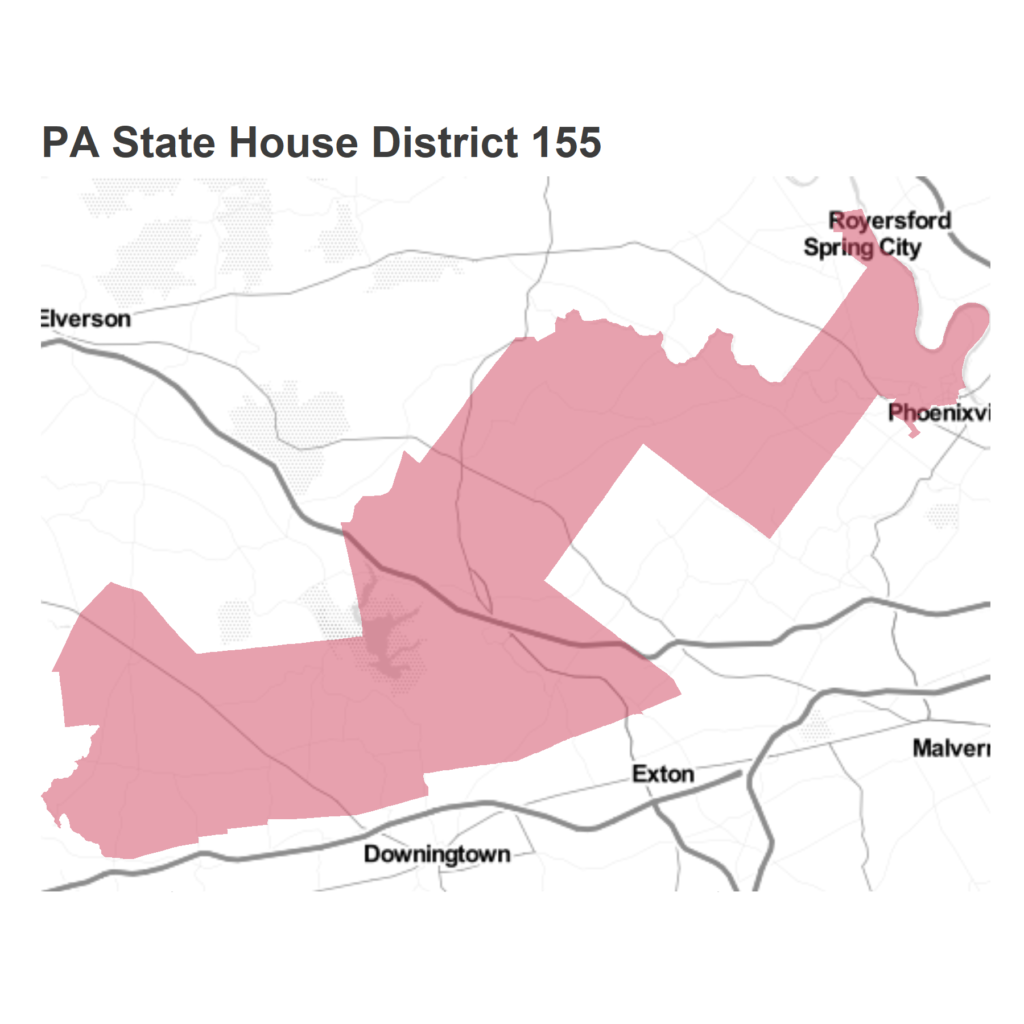 |
Corbin was first elected in 2012, and won reelection by 21 and 16 points in 2014 and 2016, respectively. In 2016, voters gave her a landslide victory even while voting strongly for Clinton, providing a 24 point swing that was typical of districts in Chesco.
All but one precinct voted more for Corbin than for Trump, with 18 of the 30 precincts showing an over-20 point difference between the Republicans.

While Phoenixville and Spring City are denser than the right of the area, the sweeping Republican stretch in Uwchlan (above Downingtown and Exton) still dominate the vote, by virtue of their huge landmasses. Friel Otten lives in Uwchlan, which may prove important in swaying this traditionally Republican stronghold.
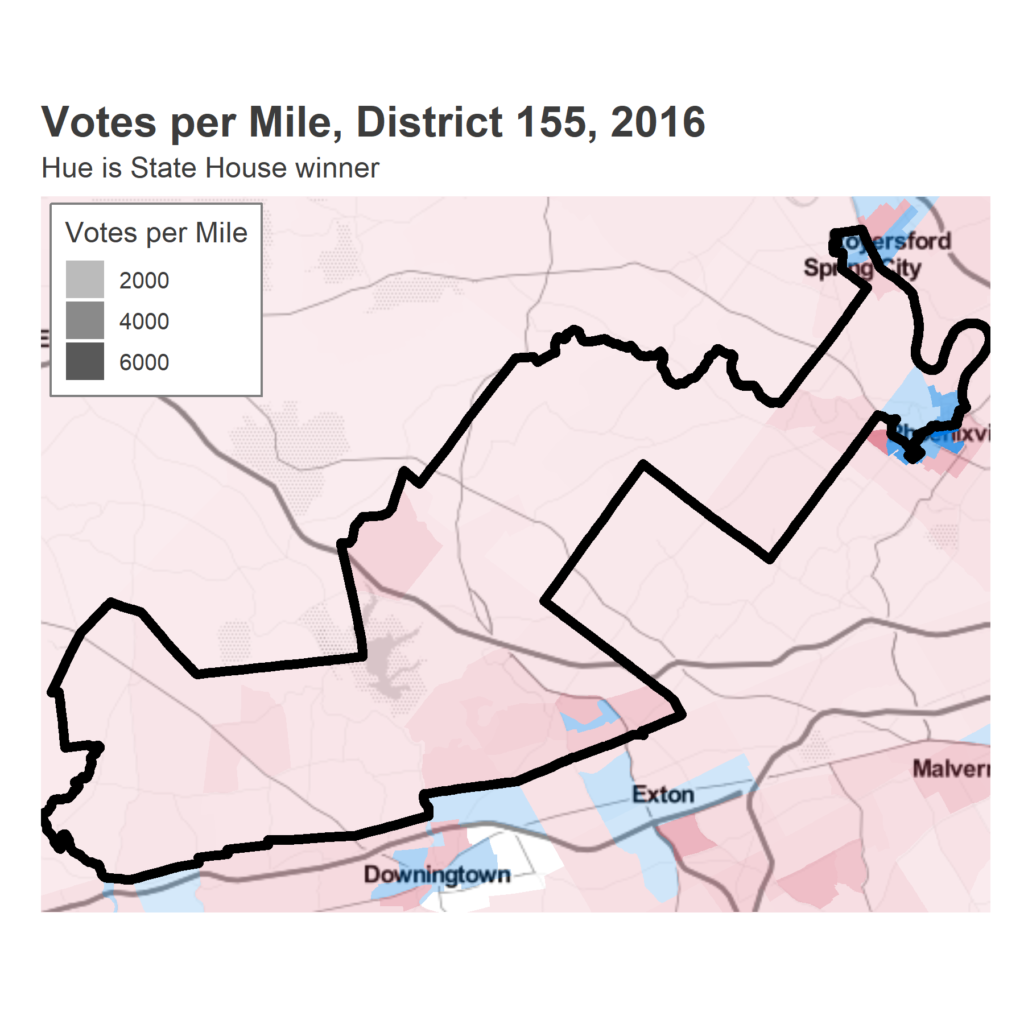
The district is basically entirely White, with the most diverse Census Tract being in the heart of Phoenixville, which is still 71% non-Hispanic White, and 19% Hispanic (and only a third of that tract is even in the district). No other tract is less than 79% White.
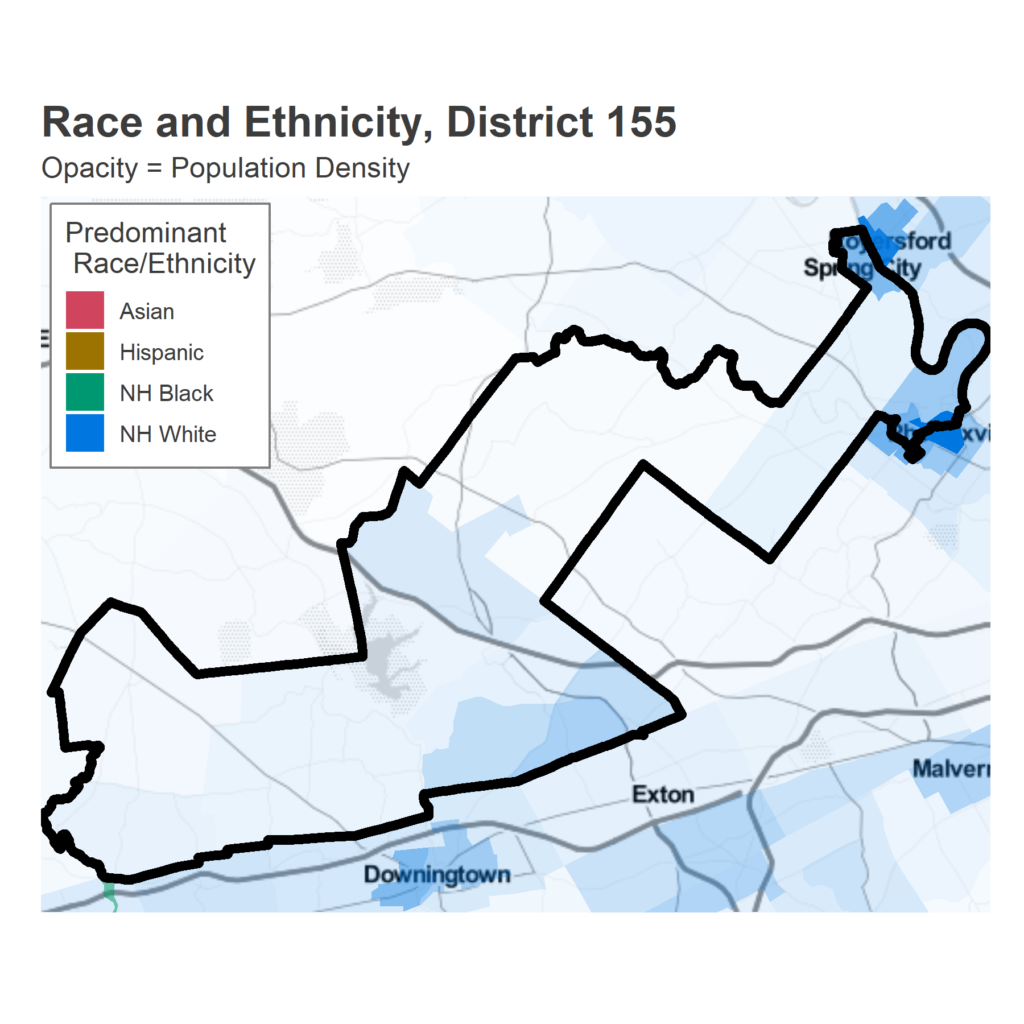
Lining up the precinct votes in order of 2016 vote shows limit of the Democratic precincts’ impact, and the steep hill for Friel Otten. She needs many of the broadly Republican precincts to shift–like they did for Clinton–and can’t just rely on the local urban cores.
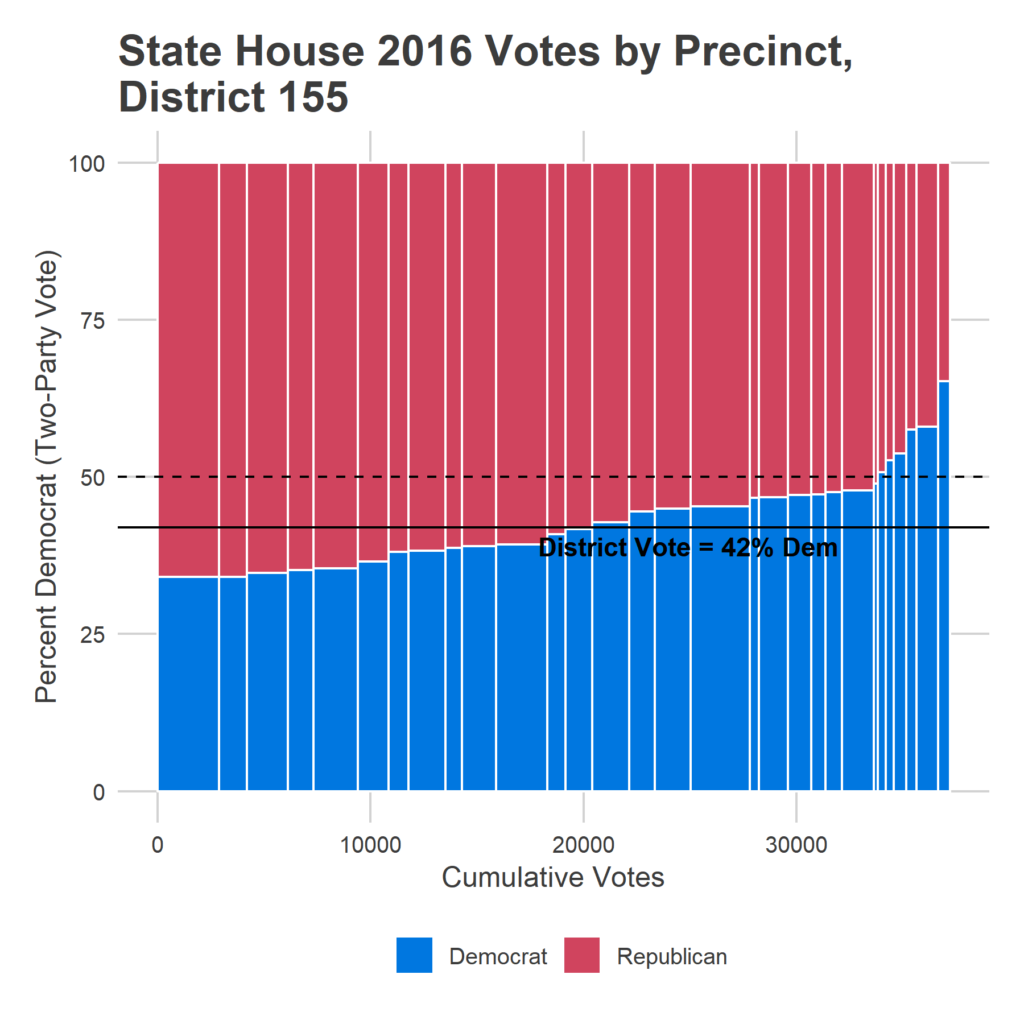
Unlike the other districts I’ve looked at, this one shows almost no difference in relative turnouts between 2014 and 2016: all precincts increased their votes by 75%, regardless of party. In every other district, Democrats turned out disproportionately more in 2016. In those cases, I thought it boded well for Democrats: if an engaged Democratic party looked more like 2016 than 2014, that would help them. Here, that looks less likely: the huge engagement differences between 2014 and 2016 didn’t yield any Democratic edge, so it’s hard to imagine them getting a turnout edge here. Any progress will have to be changing the minds of voters.
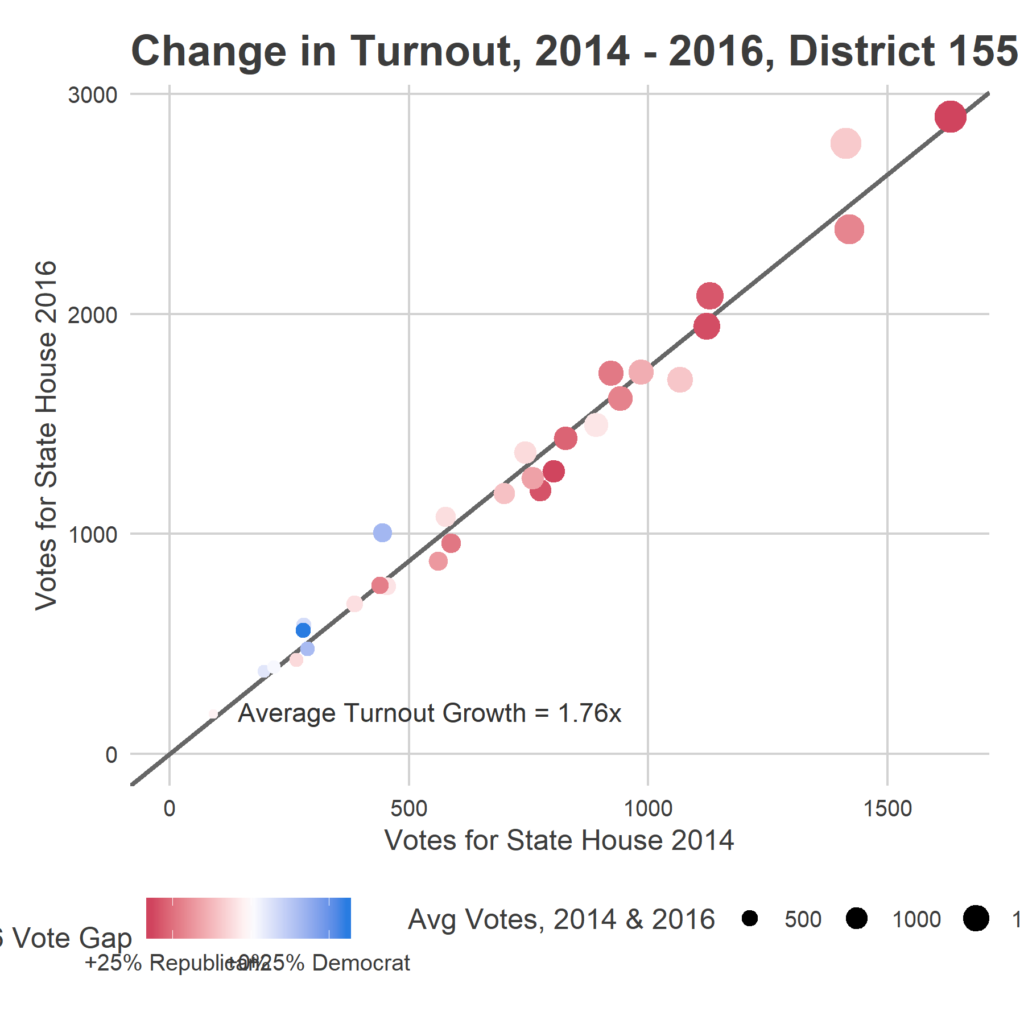
This district is a stretch for Democrats, but is the type of District–with a strong Republican incumbent but steep anti-Trump sentiment–where they will have to do well to take the state house in November.
Sources:
Election data from the Open Elections Project
Population data from the 2016 American Community Survey 5-year estimates.
Boundaries and GIS data from election-geodata
Base maps provided by maps.stamen.com/
